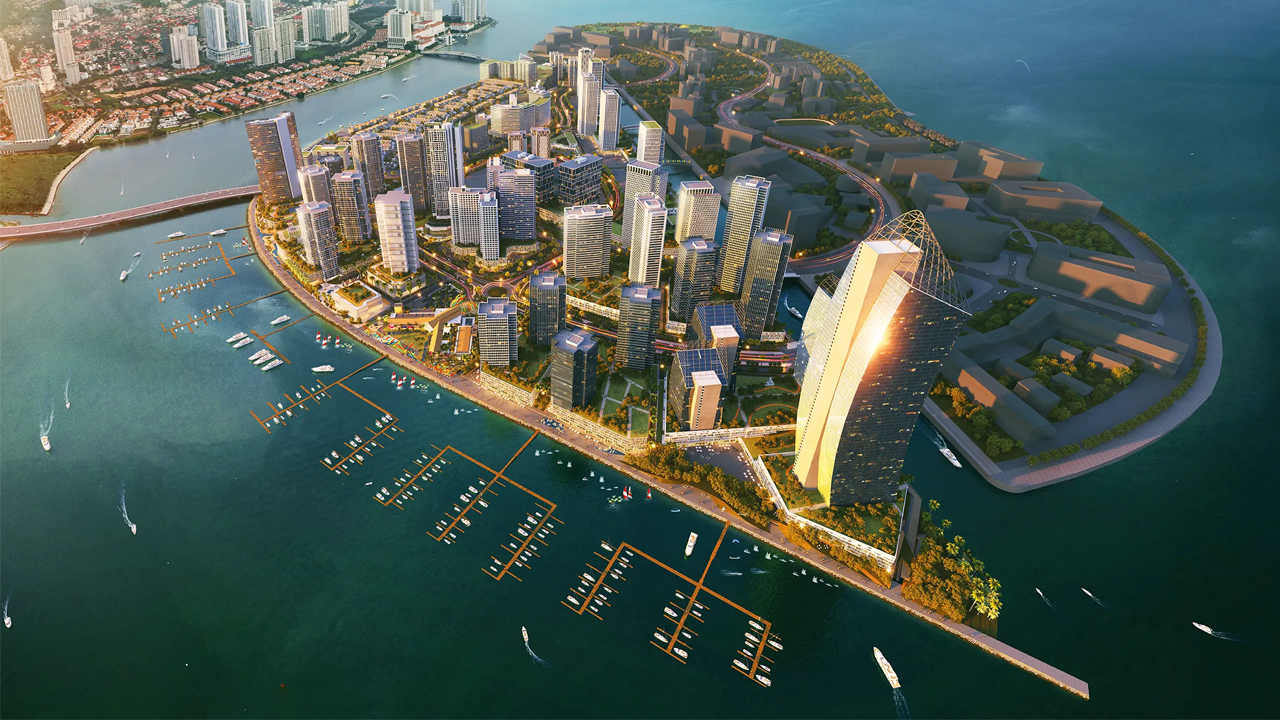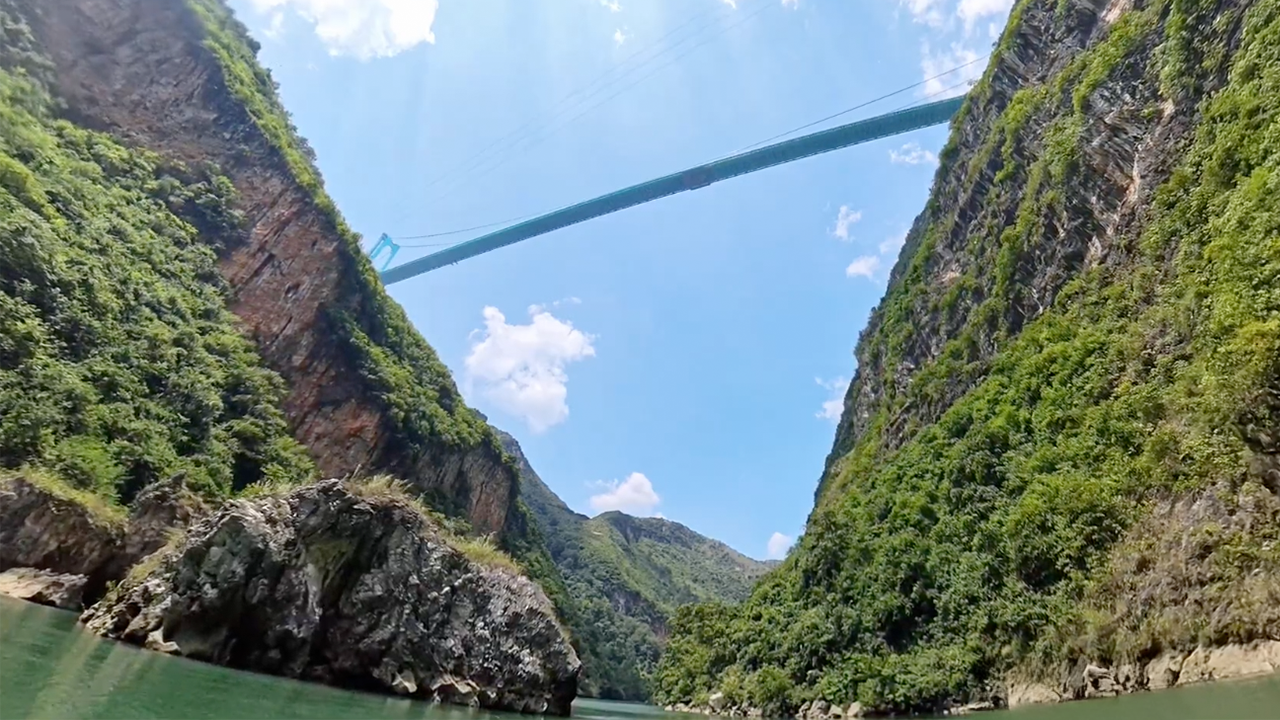This City is the Next Singapore
- Youtube Views 1,041,815 VIDEO VIEWS
Video hosted and narrated by Fred Mills. This video contains paid promotion for Odoo.
THIS AIRPORT could change the fate of an entire country… At least, that’s what the government, and the architects, are hoping for.
It’s located on the outskirts of Phnom Penh, the capital city of Cambodia.
Cambodia is a country full of natural beauty and rich culture, but it has been marred by civil wars, violence, and extreme poverty.
Fortunately, that is all beginning to change. Cambodia is now the fastest growing economy in Southeast Asia, and the third fastest in Asia overall.
The nation’s capital has set its sights on becoming a major player in the region and it's all starting with this $1.2BN new airport.
How can an airport reinvent a whole country, you might ask? Well, it’s happened before. Quite a few times.
Before we talk about what this airport wants to achieve, however, we need to talk about how it was built.
An airport inspired by Cambodia
The first thing you notice is the canopy that’s meant to resemble the jungles of Cambodia.
There are trunks that reach up and shield visitors from the sun with their branches. Instead of leaves, steel blossoms outward, forming a screen that filters the light.
It also references the country’s vernacular architectural style like these thatch roofs made from sugar palms.
The canopy borrows cooling techniques from these designs as well.

Above: Techo Airport expands the concept of stack and cross ventilation.
These traditional huts use two ingenious methods of ventilation to keep cool. The first, stack ventilation, is where cool air enters through the lower part of a building and pushes hot air up and out through air gaps in the roof.
The second is cross ventilation, which achieves the same effect through gaps between the roof and the walls. The cool air in effect pushes the hot air out.
Temperatures in Phnom Penh frequently rise as high as 40 degrees celsius during the hottest months, so keeping cool is a must.
By borrowing from these natural cooling techniques the airport won’t have to rely as much on air conditioning, the cardinal sin of most of our modern glass and stainless steel structures.
Instead of using sugar palms, the canopy is made of a lightweight steel grid shell supported by structural “trees” that span 36 metres. This single canopy spans the entire airport.
These artificial trees scale the concept of stack and cross ventilation, using cool air that enters through openings to push the hot air out of the terminal.
The canopy is made of a crosshatched material that filters the harsh summer sun while lighting the vast airport. The interior building appears different as the sun moves throughout the day.
And it's beautiful.

Above and Below: Techo Airport's incredible canopy under construction. Image courtesy of Foster + Partners.


Elevating an airport
It is an incredible example of how light can be used to elevate a space. This isn’t just an airport. This is a gateway to an entire country.
The terminal will be flush with trees and greenery throughout and will play their own role in keeping the building cool, as plants release water vapour through their leaves.
In fact, this airport has aims to be one of the greenest in the world. It will be run almost entirely on energy generated by onsite solar panels.
This huge open space is where all the passenger processing, security and immigration, and shops will be.
Stretching out from the main building are “piers” where the terminals will be. They are aerofoil foil shaped - like an enormous boomerang - so as to optimise walking distances.
The airport is well on the way to completing construction, but this is only Phase One.
Futureproof… for 50M passengers
Once finished Phase One will allow the airport to accommodate 13 to 15M passengers and around 175,000 tonnes of cargo annually.
It will be F4 class, the highest in the class of an airport. This means it can accommodate large aircraft with extensive requirements such as runways over 3,000 metres in length, suitable for the biggest passenger and cargo planes.
Phase Two will expand the airport, adding a second aerofoil wing to the terminal by 2030, increasing passenger capacity to 30M.
There is space for this second “pier” to be built on the other side of the building.

Above and Below: The airport is future-proof for a 2050 Cambodia. Image courtesy of Foster + Partners.

The airport is being constructed on a 2,600 hectare site in southern Kandal and Takeo provinces, about 20 km from the capital Phnom Penh (puh nom pen). So there is ample space to expand.
A third and final phase will see the airport grow to 50M passengers by 2050, making it comparable to the roughly 42M annual passengers of Singapore’s Changi Airport.
This comparison is important, because it reveals Cambodia's endgame.
Second Singapore
The phrase “Second Singapore” is thrown around a lot. Singapore is the economic miracle of Southeast Asia. Despite its lack of natural resources and its small size, the country is the most prosperous in the region.
It wasn’t that long ago that Singapore was a relatively poor country and Phnom Penhwas considered the “jewel of Asia”.
Singapore’s first prime minister reportedly said “I hope, one day, my city will look like this,” when visiting Phnom Penh in 1967.
Fast forward to today and Singapore is thriving. Thanks to low taxes, a business-friendly reputation and a strategically placed international airport that has opened the city up to the world.
Singapore is located nearly right in the middle of Southeast Asia. Thanks to this Changi Airport is one of the largest transportation hubs in the world.

Above and Below: The airport will set up the city as the next Singapore. Image courtesy of Foster + Partners.


It oversees roughly half a million flights every year from 100 different airlines to destinations in Asia, Australia, Africa, Europe, the Middle East, and North America.
The Airport famously contains an eight-acre garden complete with the world’s tallest indoor waterfall. This five-storey high forest is entirely encased in a 144,000-square-foot steel and glass donut structure. You can see where Techo International Airport gets its inspiration from.
Singapore connects the world. And you should never underestimate the power of connection to fuel an economy.
In fact, it’s a model Dubai closely followed with its own international airport, again located strategically between Europe, Asia and Africa.
Dubai, too, has used its airport to diversify its economy, attract tourism, and boost trade.
By 2014 the airport created over 400,000 jobs and contributed more than US$26BN to the economy. This alone accounted for 27% of Dubai’s entire GDP.
These cities used their airports as connectors between opposite sides of the globe. They boosted trade and increased tourism. Both things that are driving Cambodia’s economic resurgence.
Cambodia’s comeback
This is illustrated in the massive boom Cambodia’s aviation industry is currently experiencing. The country’s three international airports have received more than 3M passengers combined in the first half of this year alone, a 22% increase from the same time last year.
The country’s aviation authorities predict the industry to grow a further 67% from pre-pandemic levels in 2019. This is incredible growth.

Above and Below: The new airport will address the country's booming aviation industry. Image courtesy of Foster + Partners.

To encourage this the country has been implementing an “Open Sky Policy” - it’s an initiative that aims to bring in more international airlines by reducing restrictions on air traffic rights, increasing the number of flights, and allowing more freedom for airlines to choose their routes and frequencies.
This has been vital in increasing Cambodia's air traffic and thus allowing for tourism and trade to grow as well.
The rest of the world wants to be in business with Cambodia, and Cambodia needs an airport to match.
This airport, while looking spectacular and taking advantage of ingenious design solutions, also has the capacity to expand as Phnom Penh does.
We’ve seen it time and time again, whether it’s Dubai or Singapore, infrastructure facilitates growth.
While a single building can’t change the fate of a country, it can push it towards its destiny.
This video and article contain paid promotion for Odoo.
Video narrated and hosted by Fred Mills. Additional footage and images courtesy of Foster + Partners.
We welcome you sharing our content to inspire others, but please be nice and play by our rules.








